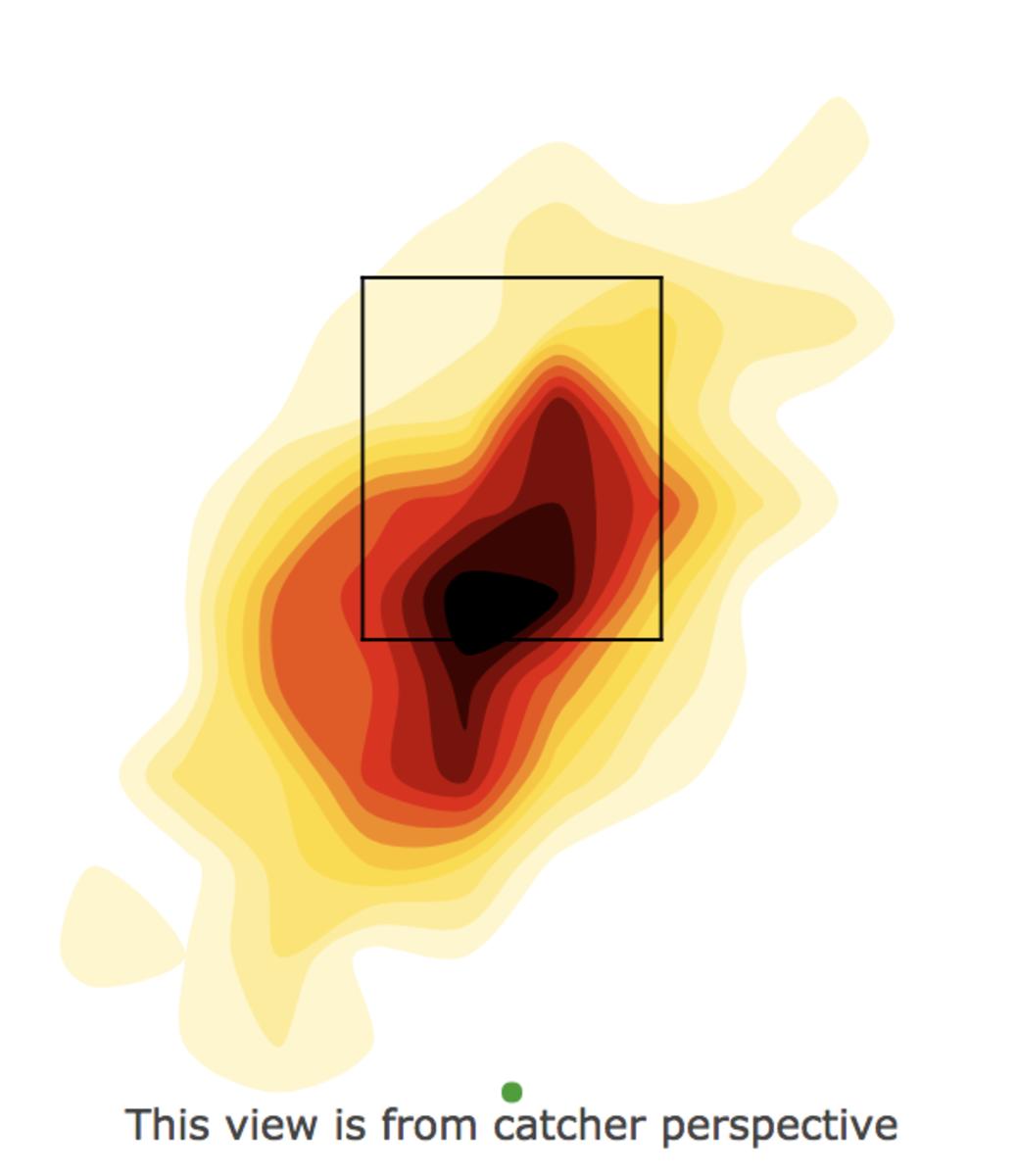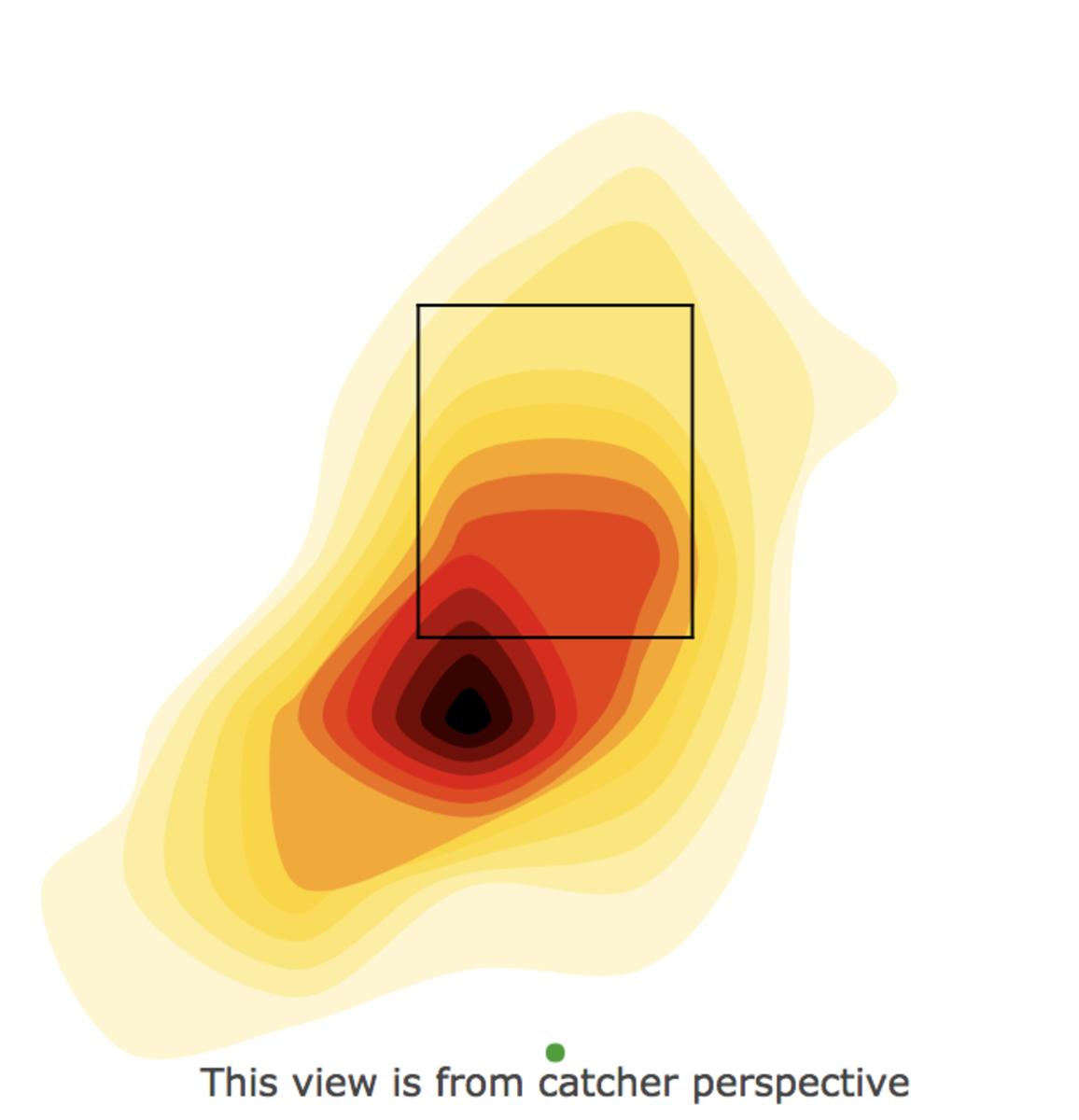Trouble With the Curve? James Paxton's Struggles May Be Tied To His Best Pitch

When James Paxton takes the mound Thursday, he’ll be looking to bounce back from an ugly start in which he allowed five runs on six hits and three walks in four innings. In fact, it has been a tough month for Paxton, who takes a 5.61 ERA and 1.44 WHIP into his start against the Indians. A chic sleeper pick for the AL Cy Young Award back in prediction season, he hasn't held up his end of the bargain thus far. But this isn’t a column about his struggles.
Instead, this is about a curious change Paxton has made this season—and in the interest of full disclosure, I’m going to tell you up front that it might not mean anything. I think it’s undeniably interesting, but it might not be having any bottom-line effect on Paxton’s performance this year. Still, baseball is a game that demands we explore all the intricacies and nuances, even if they don’t lead anywhere.
Paxton has always owned a filthy curveball. I mean, look at this thing.
If you could throw a curve like that, you’d probably break it out all the time, right? That’s what Paxton did last season. He threw a career-high 136 innings in 2017, tossing his curveball up there 21.5% of the time. The results demanded it: The pitch had a whiff rate of 17.8% in 2017, and, for his career, Paxton got empty swings on 18% of his curveballs through last year. Among curves hitters put in play last season, 67.9% were grounders.
Paxton’s cutter, too, has been a valuable offering since 2016, the first season in which he threw more than 100 innings, but it took a backseat to the curve last year. He threw it 10.7% of the time last season, and it generated a 20.6% whiff rate and 52.4% ground-ball rate. Both pitchers were impressively effective, and they worked well in conjunction with his blazing four-seam fastball, which sits at 95–96 mph and touches the high-90s.
Last season was as close to Paxton had come to a full breakout, and that’s an important point. Had it not been for yet another injury, he would have entered this season with true ace bona fides, and he would have done it on last year’s pitch mix. Paxton could have looked at each pitch’s characteristics and determined that the cutter needed a larger profile this season; every player in the majors needs to make adjustments to survive. Still, he set career bests in ERA, FIP, xFIP, WHIP (by far) and strikeout rate, all while staying as healthy as he has ever been. It would only make sense for him to tweak as little as possible after such a season.
Instead, Paxton has essentially flipped the usage rates for his curve and cutter. This season, it’s the cutter that has a 21.6% usage rate, while the curve is down at 14.5%. The cutter has been even better than it was a season ago, registering a 25.7% whiff rate and 60% ground-ball rate. Hitters have managed a .250 batting average against the pitch, but just a .083 isolated slugging percentage. The cutter was good last year, and is becoming a potentially great pitch.
The curve, meanwhile, has lagged for Paxton this season. Its whiff rate is down to 11%, its ground-ball rate has fallen sharply to 42.9%, and hitters have tattooed it to the tune of a .500 batting average and .625 ISO. What’s more, they simply aren’t falling for it the way they did last year. Paxton induced swings on more than 40% of curveballs that he threw out of the zone last season. In 2018, that rate is all the way down to 16.3%. As such, nearly 60% of the curves he's thrown have gone into the scorebook as a ball. I think we’ve found the driver behind his increasing walk rate.
The main reason why I issued the disclaimer that this might not be a thing is because it’s hard to diagnose just what Paxton needs to do to get the curveball back to its previous effectiveness, which could take some strain off the cutter. Paxton’s 2018 release point on the curve is, for all intents and purposes, the same as it was in 2017. Same goes for the movement, which is actually up a little bit this year, both horizontally and vertically. Paxton isn’t giving anything away in terms of release point, and the pitch is just as nasty, if not more so, in terms of break.
If there’s any one factor that can explain Paxton’s struggles with his curveball this season, it could be location. Check out the following heatmaps, courtesy of Statcast; the first one is from 2017, and the second is from '18.


No pitch can survive by being entirely a chase pitch. If a pitcher is going to induce swings on pitches outside the zone, he needs to be able to throw the offering for a called strike consistently. Paxton did that with his curveball last year, when it went for a called strike 18.3% of the time. He isn’t doing it with the curve this year, with it registering a 13.7% called-strike rate. And lest you think that’s only because hitters are putting it in play more often, they’ve actually made contact with it when it's in the zone less this year than they did last year.
That’s what makes this different than, say, Jake Arrieta's sudden ineffectiveness with his cutter/slider two years ago. That pitch didn’t change meaningfully, but hitters wised up to the fact that he regularly threw it out of the zone and stopped chasing it. Paxton had no trouble spotting his curve for a called strike last season, but he is having trouble this season. That suggests that he has lost some feel for the pitch, and if that’s the case, it could lead him to throwing more cutters, especially given the success he has enjoyed with it over the last two years.
Again, this might not be anything, but no one can say that it isn’t interesting. And if it is something, it’s reason to believe that Paxton needs to find the feel for his curveball if he is going to be the Cy Young candidate so many believed he could be this season.
